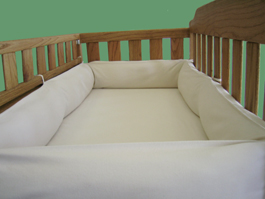 Since KID was founded, we have looked at information from the Consumer Product Safety Commission (CPSC) on recall effectiveness. As part of every recall, Monthly Corrective Action Reports are to be filed, detailing how many consumers have participated in the recall and what manufacturers have done to reach the users of their products.
Since KID was founded, we have looked at information from the Consumer Product Safety Commission (CPSC) on recall effectiveness. As part of every recall, Monthly Corrective Action Reports are to be filed, detailing how many consumers have participated in the recall and what manufacturers have done to reach the users of their products.
This information has to be requested through a Freedom of Information Act request to CPSC, and it routinely takes weeks, months or more to fill. Randomly, envelopes from CPSC show up in our office with the latest response.
We got one yesterday that we think highlights the dismal state of recall effectiveness. This was for a 2007 recall of a play yard in which one baby died when he became tangled in a looped belt from the changing table attachment. In addition, some of the products had an attached bassinet. The manufacturer and CPSC had 45 reports of babies rolling into an unsafe position while in the product. There were 425,000 units in consumers’ hands.
We didn’t get the monthly reports we requested, but we did get a ‘close out’ report of a corrective action plan for the product.
The report says the recall participation rate is 2% — 6,458 of the 425,000 units. But half of those were still with the manufacturer or retailer — so the number of products in consumer hands which were ‘fixed’ was .87% — less than 1%. And where are the rest? No one knows, but many, if not most of them are probably still in use. And this recall even included a $15 check for participation! But apparently less than 1% is ok — the file was closed.
The lesson? First, check this particular recall and make sure you or your child’s caregivers aren’t using this product without the remedy — if you find it, let us know! Second, we all need to work together with CPSC and manufacturers to keep children safe from recalled products. The best way? To make safer products and test them rigorously to avoid recalls. But once a product is recalled, something more needs to be done to get products out of homes and child care facilities. KID has some ideas that we’ll be working on in the coming year, but we’d love to hear from parents and caregivers too — how can manufacturers best reach you when a product is recalled? What would make you take the time to participate in a recall?

